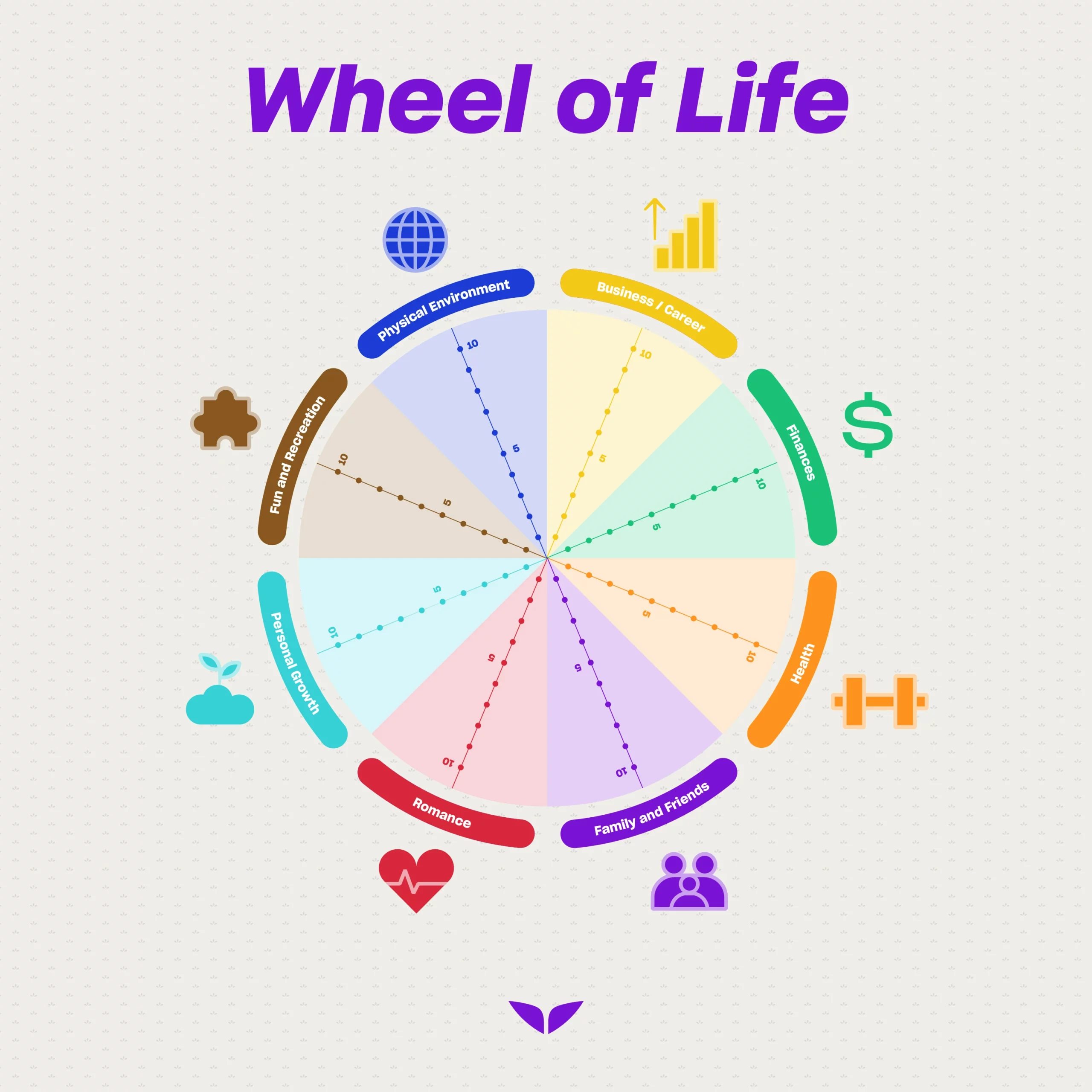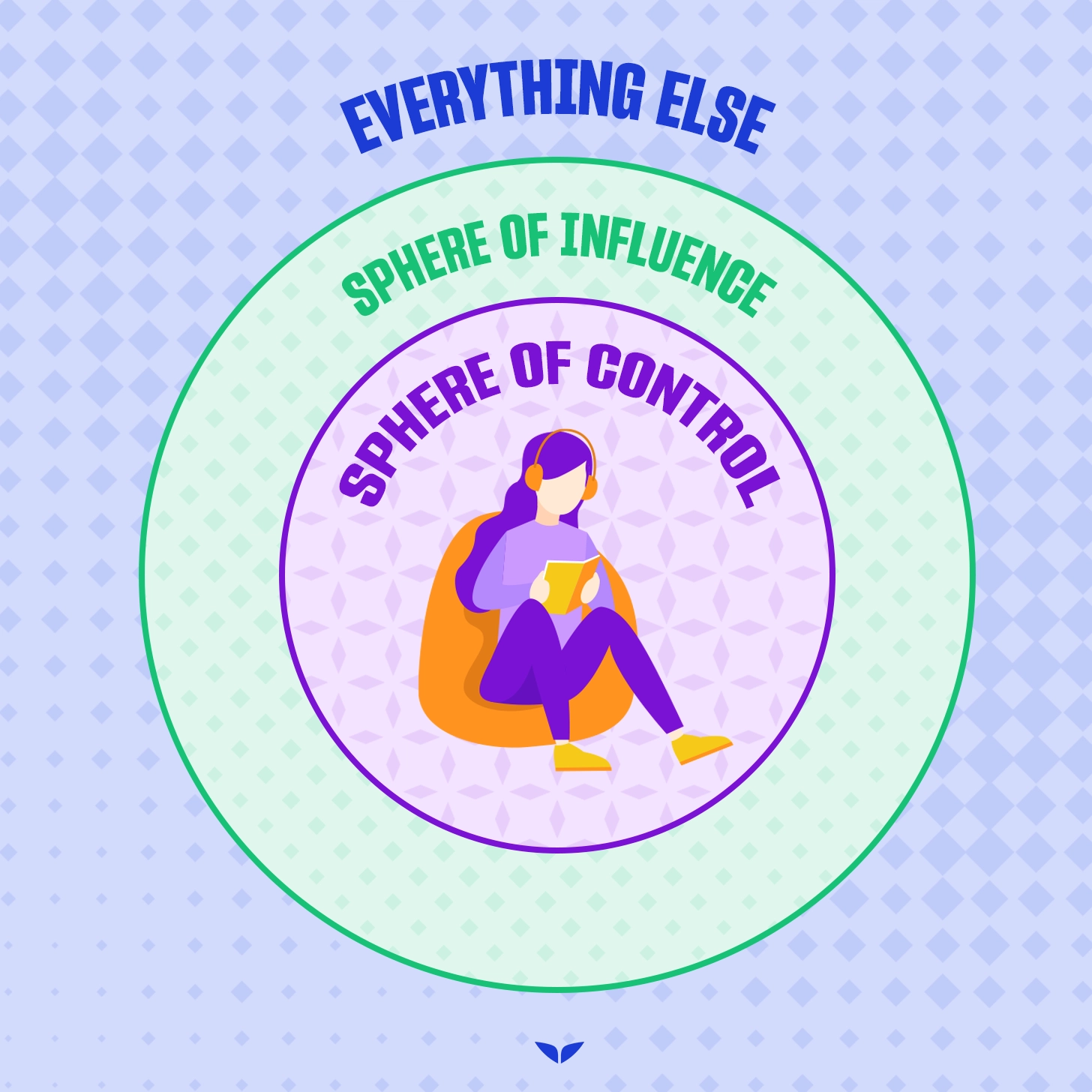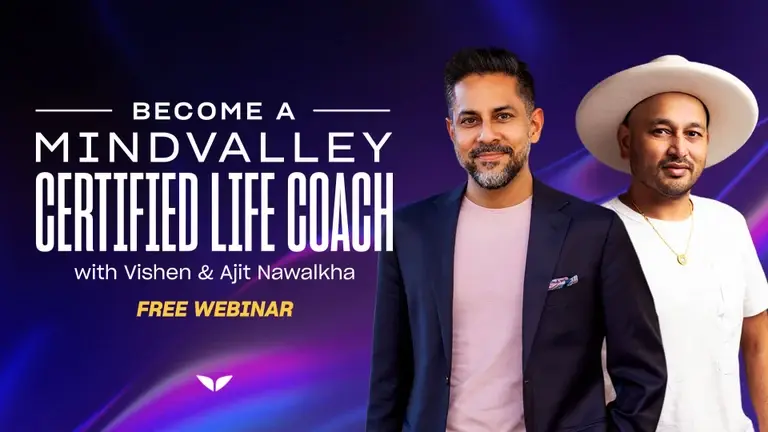Painters have brushes, musicians have instruments, and coaches have transformation techniques they use with their clients.
There are so many different coaching tools and techniques available; however, choosing the most effective ones can be a challenge.
Ajit Nawalkha, co-founder of Mindvalley Coach (formerly known as Evercoach by Mindvalley), has been coaching thousands of his clients to become more emotionally, spiritually, physically, and mentally resilient and be the change the world needs.
According to him, transformational coaching techniques can help your clients see new possibilities and make them a reality through their talent.
If you are building a coaching business or aspire to master your coaching skills, get inspired by Ajit’s practical insights.
Why Do You Need Effective Coaching Techniques?
Coaching techniques are tools used during coaching sessions to guide your clients through transformations and create results.
Effective coaching techniques develop trust between you and your client, encourage transparent dialogue, foster autonomy, and help clients see new possibilities, dream bigger, and get clarity. They also provide an outside perspective that others can use to make personal improvements.
The proper selection and combination of them can create a powerful coaching session for your clients and help you master your coaching skills.
It can vary depending on your field and the learning styles of the people you coach. There are tools available for business and life coaches.
View this post on Instagram
What Are the Best Coaching Techniques?
There are specific foundational techniques that most coaches use, be it personal or professional coaching.
They help your clients get clarity on their situation in life, set authentic goals, and stay motivated on their journey.
1. The Wheel of Life
This technique is great for any first coaching session, as it guides your client to take a step back and assess their current situation.
Who is it for?
This technique is great for clients who don’t know what to focus on or lack clarity on their goals.
This tool helps them analyze key areas of their lives and identify what to work on to achieve the results they want.
How does it work?
Ask your clients to draw the Wheel of Life on a sheet of paper and divide it into the main categories: Physical Environment, Business/Career, Finances, Health, Relationships, Romance, Personal Growth, and Fun and Recreation.

Then, ask them to classify these categories by importance and level of satisfaction to determine which ones need more focus and an energy boost to regain balance and satisfaction in their lives.
Example
You might start working with your client on improving their business. But at some point, your client might feel a significant lack of balance. When they evaluate the main spheres of their lives, they will see which area is the weakest in terms of satisfaction. They might realize that they need to focus more on the most important relationships in their lives to feel more content with life.
2. The Moonshot Technique
This technique is for creating goals that empower and motivate your clients.
Who is it for?
If you have a coaching client, they probably already have a goal in mind. But what if their goal is not ambitious or challenging enough? Or what if they’re not sure if that’s what they really want? The Moonshot technique is designed to help them set inspirational goals.
How does it work?
Dive into your client’s dreams and motivations until you identify what hidden passions they might’ve lost along the way or didn’t realize they had.
Ask your client to make a list of the most important ones. Out of this list, have them select the ‘moonshot goals.’
These are the goals they’ve probably considered at some point in their lives but rejected as “impossible” or “not good enough.” Those are the ones you want to focus on. The ones that might seem like the most difficult ones to achieve.
Make sure these goals are as specific as possible, as it’ll help you guide them through their coaching journey to achieve them.
Once the goals are clear and concise, help your client break them down into smaller steps and co-create an action plan for them to reach those goals.
Example
Let’s say your client has lost their sense of purpose, adventure, and excitement for life. Or they might be feeling trapped in their daily routine, filled with mundane activities that are boring and unchallenging.
Start by asking your client a series of questions that will take them out of their current thinking:
- What was a secret dream you had when you were a kid?
- What are some activities and experiences that fill you with joy, excitement, and enthusiasm?
The idea is to motivate your clients to start thinking bigger and bolder and to remember long-lost dreams and desires.
When they’ve answered your questions, have them start a list of things they’d love to do, be and have.
3. The Spheres of Influence
This technique is an incredibly effective process that will quickly empower your client to take back control in any area of their life.
Who is it for?
It’s recommended for clients who are overwhelmed, burned out, or helpless point in their lives and need a mindset shift.

How does it work?
Have your client draw two circles—a smaller circle within a large one.
Have them label the larger circle “The Things I Can Influence” and the smaller circle “The Things I Can Control.”
Now, ask them to label the space outside the circles as “Everything Else.”
What you need to do is guide your clients through creating a list of the things they can control and the things they can’t. Identify the items they have some kind of influence over.
Then, ask them to make a list of the factors that are creating a feeling of frustration, unease, or sadness, and determine if they are within the circles that can be modified by their influence or not.
After this technique, coach your client to focus on what they can change – inside the spheres – and let go of the factors they can’t change – outside the spheres.
The technique gives a broad view of the situation around the client and the ways to approach each of the stressing factors with a list of alternate solutions.
Example
Let’s say your client is anxious, stressed, and overwhelmed because their company is downsizing due to an economic downturn. There’s a chance your client might lose their job.
You could use the Spheres of Influence technique to empower them and help them reclaim a sense of control.
View this post on Instagram
Motivational Coaching Techniques
Motivational coaching techniques are designed to help your clients set goals and make action plans. If you do your goal-setting and action plan right, your clients will have a completely different life in a few months.
4. The AWESOME model
This model is based on seven elements and all elements are crucial. It is designed to help your clients set up their goals.
The AWESOME model stands for:
| Ambition | Most people prefer setting practical goals. Instead, you want your goals to be ambitious, exciting, and challenging. Otherwise, you will get bored of achieving them quickly. Though it sounds counter-intuitive, your goals must scare you a little and excite you a lot. |
| Why | The purpose of your goal is paramount for everything you do. You want to know why you want to achieve it. When it’s not well-defined, we lose our motivation. |
| Executable | It must be ambitious but also possible to achieve. If it’s not executable, it will overwhelm you. To make your ambitious goal possible, you need to have an action plan. In other words, when you know what to do next, you can move towards it. |
| Specific | It must have a measurable result. The more specific it is, the easier it is for you to track your progress, making it more executable. |
| Objective | It means that you can objectively put steps from where you are now and where you want to go. |
| Measurable | You want to be able to track your daily and weekly progress towards your goal. |
Expiring |
It needs to have a timeline to ensure that you aren’t delaying its achievement. It allows you to manage your time and actions. |
5. The HAAM Technique
The best way to achieve your goals is to have an action plan. The HAAM approach helps your clients move towards their goals consistently.
The HAAM coaching method stands for:
- Habits
- Accountability
- Achievement
- Motivational triggers
These are the things that you do daily during your coaching sessions:
- Create small habits to support your client’s action plan. You want to identify these small habits with your clients to help them move forward.
- Accountability helps stay more motivated. It can be self-accountability, peer-to-peer, or coach-to-coachee accountability.
- Achievement and rewards keep us motivated. So when your client rewards themselves for a small achievement, they stay on track.
- Motivational triggers are the things that motivate you to do something. You want to find these triggers for your clients to follow through with their action plans.
6. Coaching journal
Journaling is an effective tool for transformation that utilizes the power of questions. It helps your clients increase their self-awareness, bring clarity to their challenges, and draw wisdom from within. A coaching journal is one of the best coaching tools for self-coaching.
- Journal writing prompts. You use words, phrases, statements, quotes, and even song lyrics to prompt you to write a page or two. As a coach, you can help your client come up with powerful questions for this technique that can deepen their process of self-exploration.
- Free-writing. This is a journaling technique where you keep writing for a set period. You keep it free from overthinking or censorship, allowing a stream of your consciousness to flow freely. When the time is up, you can pause and read what you’ve written without any judgment and reflect on your insights.
Coaching Techniques in the Workplace
Not every coach can be a leader, but every leader should be like a coach. Why?
Coaching fosters independence and confidence from within and accelerates growth through guidance, motivation, support, and positive feedback. These are essential leadership and coaching skills for developing your workforce.
These effective coaching techniques can help your team members align with their authentic selves, grow their potential, and become better off at work and in life.
7. The 3 MIQs
The 3 Most Important Questions is a technique to identify your end goals.
Vishen, the founder and CEO of Mindvalley, explains that most people set means goals, but they don’t reveal their true desires (end goals).
For example, getting into a particular college, getting a job, getting material goods – these goals are nothing but bullsh*t rules (which Vishen refers to as Brules) imposed by society.
Instead, you want to set end goals based on three pillars of happiness: experiences, growth, and contribution. The 3 MIQs is a framework that helps you uncover your loftiest desires by identifying your end goals for the three areas.
He says, “End goals are the result of being a human. They are about experiencing love, being truly happy, and contributing to the world.”
So the model is really simple. You answer three simple questions on a sheet of paper divided into three columns.
The first will be labeled ‘Experiences,’ the second ‘Growth,’ and the third ‘Contribution.’ You need all three in order to reveal what’s important to you as a person, not to mention to feel happy and fulfilled for the long haul.
Set a timer on your phone for three minutes, try not to be in your head all too much, and let your soul’s desires speak through the words you write.
The first question is “What do I want to experience in this life?” List all experiences you want to have as a human being.
When you’re done, move on to the next question: “How do I want to grow?”
Ask yourself, to have all of those beautiful experiences you just wrote down, how would you need to develop yourself? What would you need to learn? Who is that woman or man you’re being invited to evolve into?
What skills are your dreams demanding of you?
When you’re done, move ahead to the final question: “How do I want to contribute to the world?” List all the ways you want to make others around you happy.
You can learn more about this technique:
8. Powerful questions
According to Ajit Nawalkha, powerful questions alone can create a powerful transformation for your team members.
“One right question can create an entirely new reality. It can reveal a past trauma, a limiting belief, and even change someone’s goal. The leader’s job is to find the right questions at the right time and ask them in a way that can trigger transformation or help find solutions,” Ajit says.
As you ask these questions, you unconsciously transfer autonomy back to your team members. In other words, you enable them to find out what they should be doing themselves.
Types of questions and when to use them:
Open questions
They don’t suggest an answer but lead to an open idea that requires reflection and eliciting insight, enabling exploring a particular situation.
They begin with what, where, who, when, and how.
For example, when did you see that happening for the first time? How are you going to create a strategy to solve this problem?
Probing questions
They are used for gaining clarification and exploring someone’s thoughts on a deeper level.
You’re probing something that you’ve been discussing to understand where they are coming from. Probing questions also allow your team members to see the options they haven’t seen before.
For example, is there an option that you have not yet considered? What are your options for solving the problem?
Hypothetical questions
They are invited to consider an alternative scenario to create more options when they are stuck. You get your team members to imagine these scenarios and explore them in the safety of their minds and what they need to do to actualize these scenarios.
They begin with imagining “what if…”
For example, imagine you got that promotion at work. How would that change…?
Paraphrasing questions
These allow you to make sure you understand what your team member is trying to say and bring the reflection back to them.
Ajit explains that these questions help leaders understand what their team members mean by what they say.
In essence, you repeat what your client said in your own words. When you paraphrase questions, it brings their attention to what they say. So it brings clarity to both of you.
For example, let me see if I heard you correctly, you say you have no time to do that task because you have more important priorities?
In essence, your questions should be an invitation to exploration and curiosity. This exploration will become a foundation for a great coaching outcome for your team members.
9. Effective feedback
According to Keith Ferazzi, a recognized global thought leader in the relational and collaborative sciences, traditionally, giving feedback has been a prerogative of a leader to offer their associates. In the new leadership model, team members also give feedback to their leaders. And the next level is enabling your team members to be each others’ coaches.
“Working in networks doesn’t allow a leader to provide the feedback to their associates, and that’s where peer-to-peer coaching steps in,” Keith adds.
You need a certain level of care to provide effective feedback, and there are three steps to reach a high level of care:
- Serve
- Share
- Care
Service is at the core of the care level, as it permits people to co-create the mission with you as you understand their mission and purpose.
Share implies vulnerability when you share about your areas for growth. When you want to change and are open to change, it opens others up to be willing to change.
Care is really about caring about others deeply and giving feedback from the perspective of their success, not yours.
Effective feedback is about effective communication. It should be clear, transparent, and positive. When feedback is positive, we are motivated to grow by trying different approaches and keep reaching for our aspirations.
Effective feedback guidelines:
- Listen often and as much as you can without pre-judgment.
- Praise frequently for specific reasons.
- Be firm and fair as people appreciate clearly defined rules and boundaries.
- Share both good and bad news.
- Focus your leadership skills on modeling and teaching solutions to challenges.
- Encourage everyone in your personal and professional life to speak up and express their own ideas.
- Treat everyone with the same courtesy and respect that you would like to be treated.
- Expect others to be successful and tell them about your expectations.
Don’ts:
- Don’t criticize employees and children in front of others, as it demoralizes people.
- Don’t penalize anyone in any way for asking questions.
- Don’t make rushed promises, and don’t be inconsistent as it promotes a lack of trust.
- Don’t be afraid to share your concerns with others.
10. Aligning organizational and individual goals
Aligning organizational and individual goals help sustain employee motivation, prioritize tasks and responsibilities, and increase collaboration within teams.
In essence, when larger goals are aligned with individual goals, employees work in cohesion without burning out.
How to align organizational and individual goals:
- Have a clear vision and goals for the organization.
- Ensure that leaders know about the individual goals of their team members.
- Regularly assess where they are as of today against the individual and organizational goals.
- Be flexible and open to changing goals and re-align them.
View this post on Instagram
Mastering the Art of Coaching
The more you practice coaching techniques, the more confident you will be in combining them in your coaching sessions. Eventually, you will develop an intuitive understanding of what technique will be the most effective for the chosen goal.
Regardless of the technique you pick for your coaching practice, feel free to alter it and create something new.
Out of all the techniques in your coaching toolkit, remember that your presence and deep listening will be at the heart of your coaching mastery, both in your relationship with coachees and the people around you.
If you want to take your coaching skills to the next level, join Mindvalley’s Certified Coaching Program. You will foster deep self-awareness, master your thoughts and emotions, and cultivate highly-skilled body intelligence.










